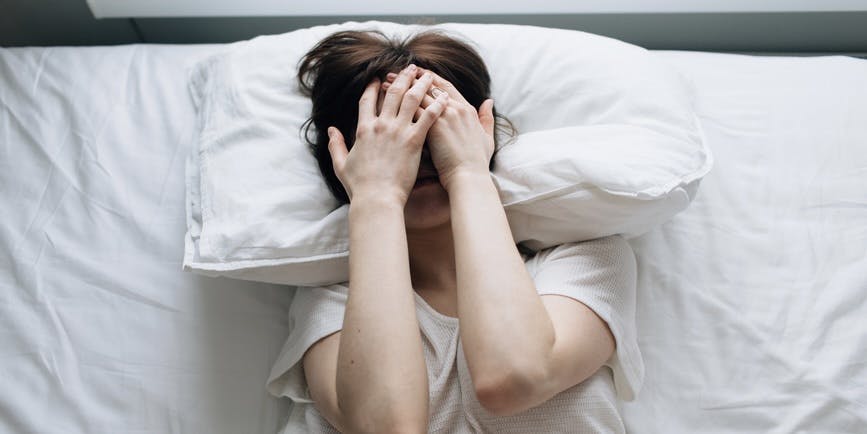
How to cure BV in one day?

Key Points:
- BV is an itchy, uncomfortable condition that happens when bacteria in the vagina get thrown out of balance.
- Prescription antibiotics help stop the reproduction of bacteria that cause BV. They won’t cure BV in a day. But they can treat bacterial vaginosis symptoms like itchiness and a fishy smell within a few days.
- Dr. B can help you treat BV online with a $15 consultation for prescription medication.
When you’re experiencing the irritation of bacterial vaginosis, minutes can feel like hours. So of course you want immediate relief!
Bacterial imbalances in the vagina cause the itchy, smelly condition. It takes some time for effective BV medications to stop bad bacterial growth. Which means you won’t find a one-day cure. But prescription antibiotics can start relieving symptoms in just a few days.
Read on for the need-to-know info about this common condition. Then, access BV medicine online with a Dr. B $15 online consultation.
What is BV?
BV is the most common vaginal condition in people ages 15-44. Up to 30% of people with vaginas in the US experience BV at least once.
BV happens when bacteria in the vagina overgrow out of balance. The vagina contains over 500 varieties of bacteria. That’s usually a good thing! But an imbalance can shift how things feel—and smell—down there.
Symptoms of BV include:
- Vaginal itching or irritability
- An itchy vulva
- A white or yellow discharge (leukorrhea)
- A strong, fishy vaginal odor, especially following sex
- A burning sensation while peeing
- Lower abdominal pain
Not sure whether you have BV or another vaginal infection like a yeast infection? You can purchase an over-the-counter test to take at home. Or connect with a licensed provider online through a $15 Dr. B consultation.
What bacterial vaginosis treatment relieves symptoms in one day?
Prescription antibiotics stop bacteria from reproducing, which eventually clears up the imbalance. The medications usually absorb into the body within a few hours. But they take a few days to start relieving symptoms—so you’ll probably have to wait a little longer for relief.
Metronidazole is the most commonly prescribed medication for BV. It comes as a BV pill or gel, and the course of treatment usually lasts seven days.
The interactions in the vagina’s microbiome—or community of organisms like bacteria and fungi—are extremely complex. Researchers don’t exactly know why. But as many as 50% of people who get BV will experience it a second or third time.
Possible causes of additional episodes include:
- Ineffective treatment: If you don’t take your medication properly or stop it too early, your body won’t have enough time to rebalance bacteria levels.
- Sexual transmission: Reinfection can occur via sex with partners of any gender.
- Genetics: Variations in toll-like receptor (TLR) genes in the immune system may indicate a higher risk of BV.
- Race: Black women in the US are more likely to have BV and BV-related vaginal bacteria. Lower income, a history of STDs or practices like douching are often at play. But risk increases despite these, too. (Researchers don’t yet know why.)
Starting another course of treatment may feel exhausting. But untreated BV can increase your risk of more serious issues. Untreated bacterial vaginosis can lead to a higher risk of:
- Low birth weight or preterm birth for pregnant people: The exact connection between BV and preterm or low birth weight is unknown. But it may correspond with an upper genital tract infection.
- Sexually transmitted infections (STIs): People with BV are at greater risk for chlamydia, gonorrhea, herpes and HIV. Some vaginal flora help protect against infection. So an imbalance can weaken the vagina’s defense mechanism and make it easier for pathogens to take root.
- Infertility: Inflammation, bacterial toxins and heightened STI risk from BV can all contribute to infertility.
- Pelvic inflammatory disease (PID): PID is an infection of the reproductive organs often caused by STIs. It happens when bacteria associated with BV move to the upper genital tract.
Are there ways to prevent BV?
No one likes to experience itchy vaginal lips or vaginal discharge. On top of getting the right treatment for you, other steps can help prevent bacterial vaginosis in the first place.
- Practice safe sexual activity: Condom use may prevent BV by minimizing new or additional bacteria in the vagina. Sex with a new partner can also change the vagina’s bacterial makeup and introduce BV-causing bacteria.
- Avoid vaginal douching: Douching upsets the vagina’s bacterial makeup, leading to a greater risk of the condition.
- Avoid smoking: Nicotine can accumulate in cervical mucus and contribute to the build-up of amines—nitrogen-containing organic compounds that contribute to vaginal odor. Smoking can also kill good vaginal bacteria.
How to get BV treatment online
If you’re experiencing the irritating symptoms of BV, don’t wait for relief! Dr. B offers a discreet and convenient way to access bacterial vaginosis treatment online.
Just start a $15 online consultation and answer a few questions about your medical history and current symptoms. We’ll connect you with a licensed provider. If appropriate, they’ll send a BV prescription to your pharmacy of choice.
BV is treatable and beatable. Get the right medication with Dr. B today.
Sources
Allsworth, J.E., et al. (2011). Severity of bacterial vaginosis and the risk of sexually transmitted infection. American Journal Of Obstetrics And Gynecology.
Bertini, M. (2017). Bacterial vaginosis and sexually transmitted diseases: relationship and management. Fundamentals Of Sexually Transmitted Infections.
Bradshaw, C., et al. (2006). High recurrence rates of bacterial vaginosis over the course of 12 Months after oral metronidazole therapy and factors associated with recurrence. The Journal Of Infectious Diseases.
Brotman, R.M., et al. (2008). A longitudinal study of vaginal douching and bacterial vaginosis—a marginal structural modeling analysis. American Journal of Epidemiology.
Brotman, R.M., et al. (2014). Association between cigarette smoking and the vaginal microbiota: a pilot study. BMC Infectious Diseases.
Centers for Disease Control and Prevention. (2022). STD Facts: Bacterial Vaginosis.
Diop, K., et al. (2019). Exhaustive repertoire of human vaginal microbiota. Human Microbiome Journal.
Fethers, K.A., et al. (2008). Sexual risk factors and bacterial vaginosis: a systematic review and meta-analysis. Clinical Infectious Diseases.
Koumans, E.H., et al. (2007). The prevalence of bacterial vaginosis in the United States, 2001–2004; associations with symptoms, sexual behaviors, and reproductive health. Sexually Transmitted Diseases.
Mollin, A., et al. (2022). Association of key species of vaginal bacteria of recurrent bacterial vaginosis patients before and after oral metronidazole therapy with short- and long-term clinical outcomes. PLOS One.
Murphy, K., et al. (2016). The interplay of host immunity, environment and the risk of bacterial vaginosis and associated reproductive health outcomes. The Journal Of Infectious Diseases.
Ness, R.B., et al. (2003). Can known risk factors explain racial differences in the occurrence of bacterial vaginosis? Journal Of the National Medical Association.
Paige, D.M., et al. (1998). Bacterial vaginosis and preterm birth: a comprehensive review of the literature. Journal Of Nurse-Midwifery.
Plummer, E.L., et al. (2019). Sexual practices have a significant impact on the vaginal microbiota of women who have sex with women. Scientific Reports.
Ravel, J., et al. (2021). Bacterial vaginosis and its association with infertility, endometritis, and pelvic inflammatory disease. American Journal Of Obstetrics and Gynecology.
Sobel, J.D. (2023). Bacterial vaginosis: recurrent infection. UpToDate.
Taylor, B.D., et al. (2013). Does bacterial vaginosis cause pelvic inflammatory disease? Sexually Transmitted Diseases.
Sign up for the free Dr. B newsletter for a weekly report on the latest in healthcare + research-based advice for staying healthy and mentally well.
Related articles







